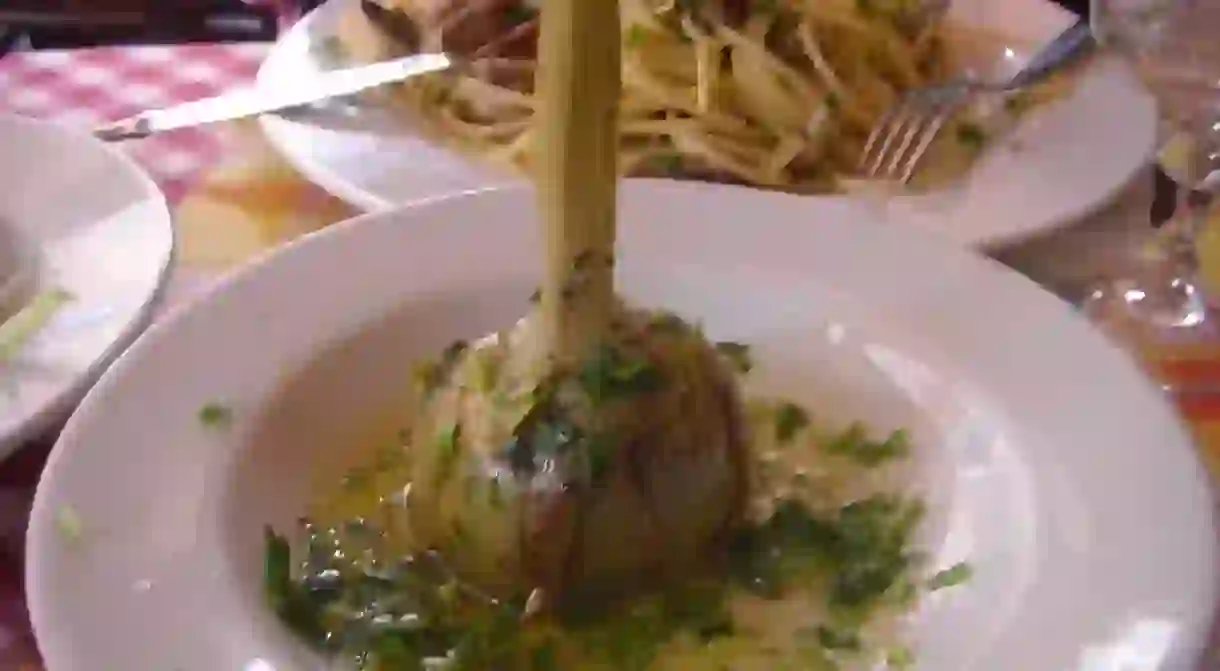7 Mouthwatering Italian Foods You've Never Heard Of

Italy is one of the food capitals of the world, but there are many dishes that don’t make the worldwide spotlight. Everyone knows pizza and spaghetti, but there are just so many more delicious choices that it’s so hard to choose which ones to share with the world. Here’s our list of the lesser known but absolutely amazing dishes that deserve a little time in the limelight.
Arancini
Throughout Sicily and southern Italy, these delicious morsels can be found anywhere you look. Arancini are stuffed balls of rice, normally with ragù (thick tomato and meat sauce), mozzarella cheese, and peas, which are then coated in bread crumbs and deep fried. They get their name from the Italian for little oranges thanks to their size and burnished hue. If you liked mozzarella sticks as a kid, you will definitely love this adult version. Varieties are found throughout southern Italy, including different shapes and fillings.

Carciofi alla Romana
This simple dish needs more publicity. Carciofi alla Romana, or Roman artichokes, are in season during spring and are one of Rome’s most famous local dishes. The artichokes are cleaned, cut, and prepared in such a way that makes as much use of the plant as possible without the hard leaves and thorns. They’re soaked in lemon juice, then stuffed with herbs, garlic, salt and pepper before being braised in a deep pan with water and white wine until the liquids evaporate. The soft, succulent artichokes are then drizzled with olive oil and herbs again before being served.

Trippa
This is definitely a love-hate dish. Tripe, or cooked intestines, has a soft, spongey, fatty texture that not everyone enjoys. In Rome, it’s simmered for hours in tomato sauce with vegetables and eaten as a dish. In Florence, it’s slow cooked in seasoned broth and served either in a sandwich (called lampredotto) or as a dish. In other parts of Italy, it can also be eaten in soup, or fried.

Pasta alla Carbonara
You’ve probably heard of this one, but we bet you haven’t had it the right way. The ingredients are simple, and there are no peas and the sauce is not white, contrary to how you’ve had it prepared at your local Italian food chain. This dish is made with spaghetti pasta, pieces of pancetta, then tossed all together in raw egg and finely grated cheese, and topped with black pepper to finish the dish. Raw egg sounds weird, but it’s used when the pasta is still piping hot, and combines with the cheese to create a creamy texture. Simple and delicious.

Ribollita
This is a classic cucina povera, or ‘poor man’s food’, from the medieval period. A soup made with leftover bread, beans, and any vegetables that can be found, this dish was said to be created by servants using the leftovers of their masters’ meal. Literally translating to reboiled in English, this soup is a considered a Tuscan classic, perfect for a hearty meal in the winter months.

Tortellini e Brodo
Simple and delicious, this dish is just tortellini served in broth. Typically eaten with beef broth in the winter months, this dish is from Emelia-Romagna and is usually made with veal and parmigiana stuffed tortellini and topped with grated cheese. You won’t want to have them any other way after you’ve tried them like this.

Osso Buco alla Milanese
This dish hails from Milan, as you could guess from the name, and is a well known classic all over Italy. Made with veal shanks slowly braised in white wine and garlic and served with vegetables, it is an instant crowd pleaser. The meat is so tender that is easily eaten with just a fork. Some modern variations are made with tomato sauce, but true Osso Buco is made without. Don’t forget to scoop out the delicious marrow inside the bones — it’s the best part!














